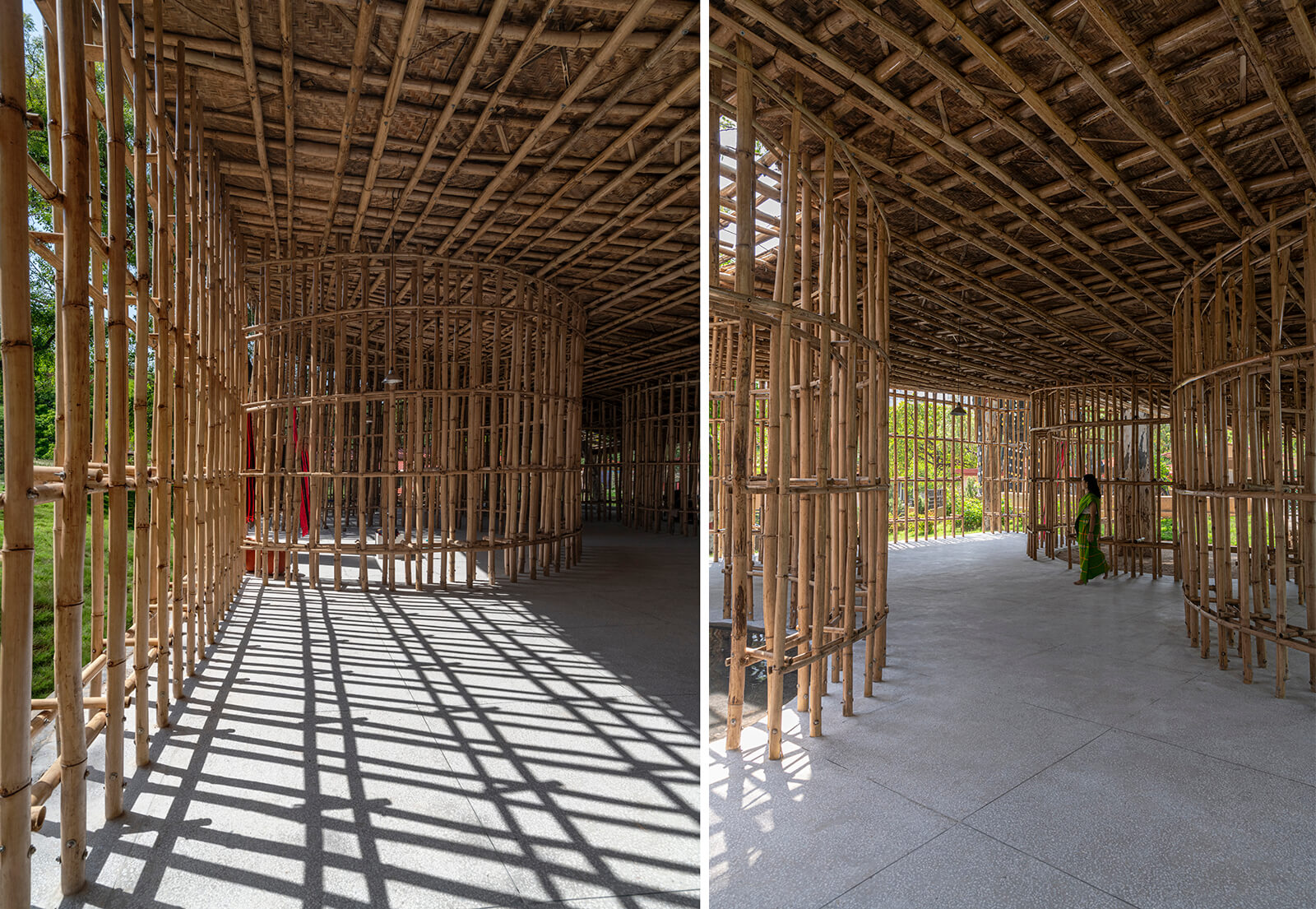Contextual elegance: Malik Architecture unveils design for Radisson Lonavala
by Nikitha SunilDec 23, 2024
•make your fridays matter with a well-read weekend
by Zohra KhanPublished on : Feb 02, 2024
A woven bamboo space lattice accommodates eight courtyard galleries and a water court that represents eight states of Northeast India. The permanent exhibition space was designed for the 2023 Surajkund Craft Fair – an annual event promoting and providing a platform to showcase Indian handicrafts and artisans. The fair is largely made of makeshift, temporary structures that are erected on a 100-acre land in Faridabad - the whole setup is dissembled after the fair’s three-week run. Mumbai-based atArchitecture studio, led by architect Avneesh Tiwari and Neha Rane, conceived the North Eastern Pavilion drawing cues from the hilly topography of the region. A multiplicity of spaces situated below a large hyperbolic roof hopes to accommodate the diversity and the rich craftsmanship of the country. The exposed bamboo grid creates a porous interior that allows sunshine to stream into the galleries while a play of shadows geometrically animates the space throughout the day. The construction of the pavilion accommodates the existing trees on the site, giving them gracious pockets within the built form.
For Tiwari, the most special aspect of the project is its integration into the existing landscape, trees, earth, water and sky. A rectangular layout locates eight semi-open cylindrical galleries for the eight north-eastern states of India - Arunachal Pradesh, Assam, Manipur, Meghalaya, Mizoram, Nagaland, Tripura and Sikkim. An unidirectional movement is curated for the space, the winding path extends as a continuation of the fair’s organic circulation. Each gallery space has a different height, and its walls intersect the roof at different levels rendering it a wavy profile. “The galleries display eight indigenous handlooms from the region's various tribes, and each gallery frames views of the site's landscape,” states the design team.

Closely-tied bamboo lattice, topped by a roof clad in bamboo shingles, encloses display spaces. A seamless blurring of the inside-outside canon permeates the design, in addition to tying cultural references to the built form. One such feature is the inclusion of a water court in the central courtyard that represents Meghalaya, known as the wettest place on Earth. The use of bamboo construction also nods to the prevalent building traditions of North Eastern India. Over 90 skilled craftsmen from the region travelled to the fairgrounds to build the pavilion from the ground up. The pavilion was built in 60 days, including the time required to source bamboo. Tiwari tells STIR that the project was a structural exploration of the woven bamboo space lattice and it taught the team about the strength and handling of bamboo components. “The collaboration with the local artisans”, he adds, “was inspiring and deepened our understanding of the indigenous culture and craftsmanship of the tribes in the eight northeastern states of India.”
Each of the eight galleries represents an indigenous loom where artisans from the region demonstrate their respective working methods. By tying the programme with the pavilion’s built vocabulary, and creating graceful spaces to showcase activities that are deeply embedded in the northeastern identity, the pavilion comes across as a home away from home.
Framing eloquence while championing vernacularity, sustainability, and essentiality in architecture, previous bamboo pavilions published on STIR include the densely packed bamboo grid as a furniture exhibition by Neri&Hu, the floating home in rural Vietnam by H&P Architects, and a densely-layered dome-like entrance to a cultural centre by VTN Architects.
by Bansari Paghdar Oct 16, 2025
For its sophomore year, the awards announced winners across 28 categories that forward a contextually and culturally diverse architectural ecosystem.
by Mrinmayee Bhoot Oct 14, 2025
The inaugural edition of the festival in Denmark, curated by Josephine Michau, CEO, CAFx, seeks to explore how the discipline can move away from incessantly extractivist practices.
by Mrinmayee Bhoot Oct 10, 2025
Earmarking the Biennale's culmination, STIR speaks to the team behind this year’s British Pavilion, notably a collaboration with Kenya, seeking to probe contentious colonial legacies.
by Sunena V Maju Oct 09, 2025
Under the artistic direction of Florencia Rodriguez, the sixth edition of the biennial reexamines the role of architecture in turbulent times, as both medium and metaphor.
 surprise me!
surprise me!
make your fridays matter
SUBSCRIBEEnter your details to sign in
Don’t have an account?
Sign upOr you can sign in with
a single account for all
STIR platforms
All your bookmarks will be available across all your devices.
Stay STIRred
Already have an account?
Sign inOr you can sign up with
Tap on things that interests you.
Select the Conversation Category you would like to watch
Please enter your details and click submit.
Enter the 6-digit code sent at
Verification link sent to check your inbox or spam folder to complete sign up process



by Zohra Khan | Published on : Feb 02, 2024
What do you think?